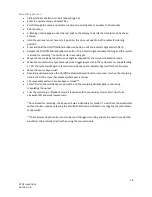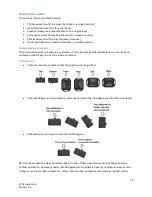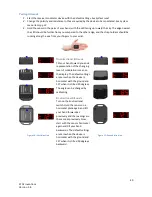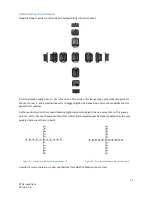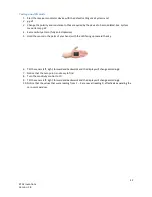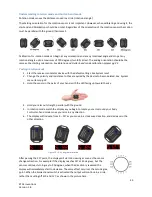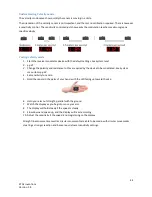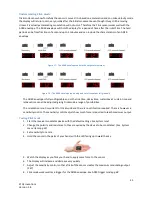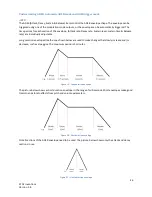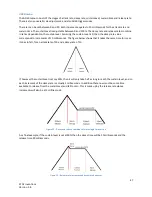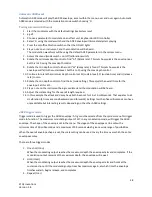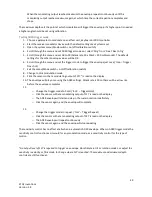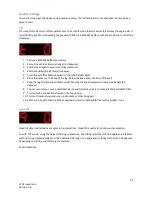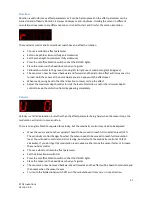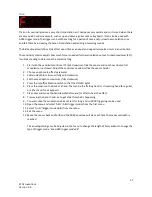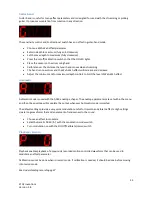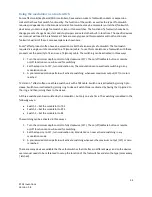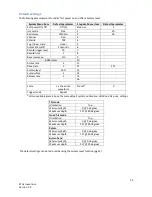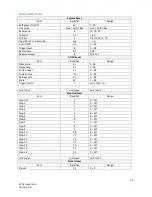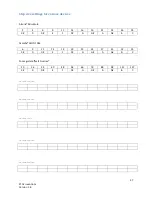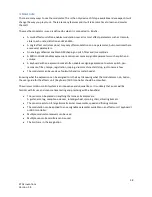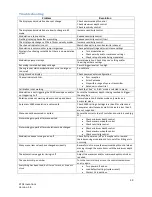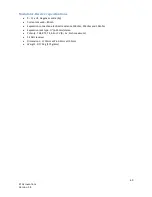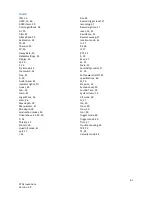
52
© Oz inventions
Version 1.8
Flick
Flick on its own will produce a very short modulation as it decreases very quickly and so it is used when there
are very quick hand movements, such as up and down a guitar neck or keyboard. It can also be used with
ADSR trigger mode. The trigger can hold the setting for a period of time and/or slow the modulations rise
and fall, thereby increasing the time of modulation and adding interesting sounds.
The bidirectional switch has little effect upon Flick as an equal and opposite impulse occurs in any direction.
The sensitivity control adjusts how much force is needed for the modulation output to reach maximum(127).
It will take testing to determine the correct setting.
1.
Start with the sensitivity control at 75 (3/4 clockwise), flick the sensor and note how close to full
modulation is achieved. Adjust the control as needed or flick the sensor harder.
2.
Choose an echo rate effect parameter
3.
Set min depth to minimum (fully anti-clockwise)
4.
Set the max depth to maximum (fully clockwise)
5.
Press the on/off/calibration switch so that the ON LED lights.
6.
Place the sensor on the back of a hand. That can be the fretting hand or strumming hand for a guitar,
or either hand for a keyboard.
7.
Play notes and move the hand rapidly before and/or after to hear the effect.
8.
Try waving the hand in mid-air to get a feel for what is happening
9.
You will notice the modulation does not last for long, and so ADSR triggering can be used.
10.
Open the menu and select ‘AtrG’ (AtrG trigger mode) from the first menu
11.
Select ‘tnnH’ (trigger mode Hold) from the menu.
12.
Exit the menu
13.
Move the sensor back and forth and the ADSR envelope will play each time the maximum depth is
reached.
The envelop settings can be adjusted in the menu to change the length of hold, and/or to change the
type of trigger mode.
‘See
ADSR trigger mode 48
’

